Bhashini Initiative
- 09 Jan 2025
In News:
e-Shram Portal, which aims to provide social security benefits to unorganised workers, has been upgraded with multilingual functionality for all 22 scheduled languages of India. This development, supported by the Bhashini Initiative, ensures that unorganised workers from diverse linguistic backgrounds can access the portal more easily and benefit from government welfare schemes.
About Bhashini Initiative:
- Launched in: July 2022
- Developed by: Ministry of Electronics and Information Technology (MeitY)
- Aim: To eliminate language barriers in accessing digital services by making AI and Natural Language Processing (NLP) tools publicly available.
Key Features:
- Local Language Translation: Bhashini offers AI-powered translation services in 22 scheduled Indian languages to ensure that digital platforms like e-Shram are accessible to everyone in their native languages.
- Open AI and NLP Resources: These tools are made available to Indian MSMEs, startups, and innovators to create a more inclusive digital ecosystem.
- Crowdsourcing Platform (Bhashadaan): A platform for people to contribute to building linguistic datasets through initiatives like Suno India, Likho India, Bolo India, and Dekho India, furthering language diversity in digital services.
- National Digital Public Platform: Aimed at providing universal access to digital content in all Indian languages, facilitating smoother communication across regions.
e-Shram Portal: A One-Stop Solution for Unorganised Workers
- Purpose: The e-Shram portal was created to provide unorganised workers with access to social security benefits and welfare schemes.
Recent Upgrade:
- Multilingual Functionality: The portal has now been upgraded to support 22 scheduled languages, making it more inclusive and user-friendly for workers who speak various regional languages.
- Previous Version: Previously, the portal was only available in English, Hindi, Kannada, and Marathi. The integration of 22 languages is a significant improvement, enabling broader participation.
Importance of the e-Shram Portal for Unorganised Workers:
- Welfare Access: The portal provides access to government schemes designed for the welfare, livelihood, and well-being of unorganised workers, including gig and platform workers and building and construction workers.
- Integration of Social Security Schemes:
- As of now, the portal facilitates access to 12 government schemes, with plans to integrate even more, including state-level programs.
- Future plans include launching a mobile app, a single application form, and the integration of payment gateways for faster disbursement of benefits.
Centenary of Belgaum session
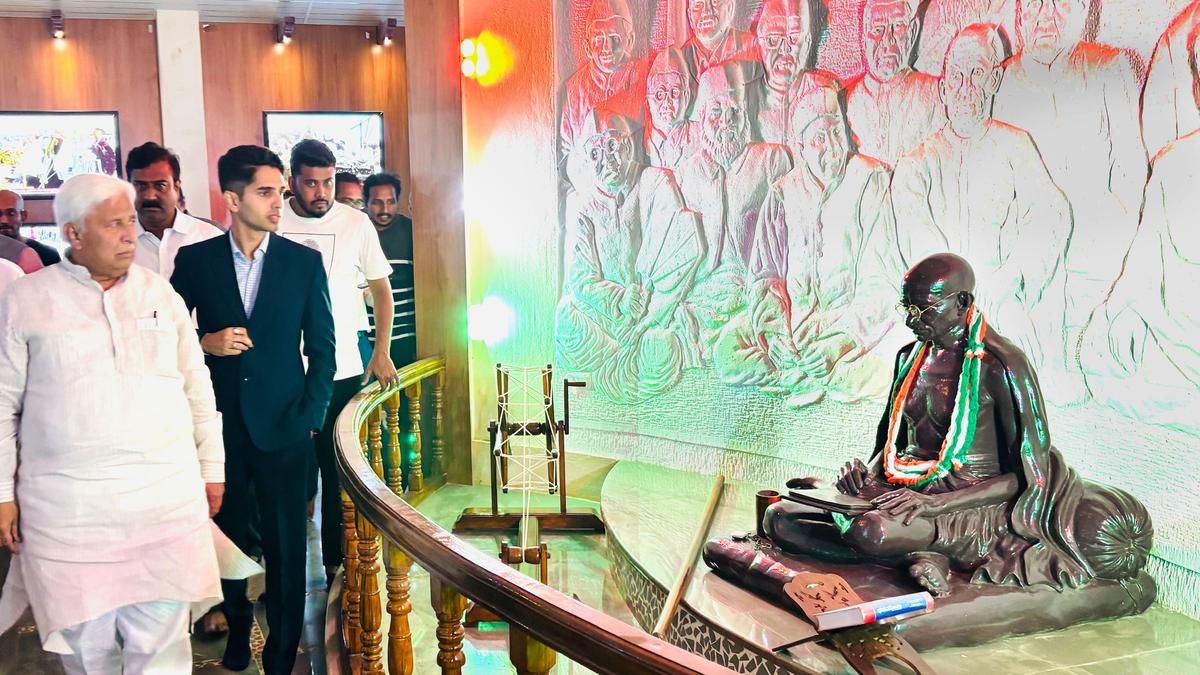
- 23 Dec 2024
In News:
The Belagavi Session of 1924, marking its centenary in December 2024, holds significant historical and cultural value in India's freedom struggle. This session, the 39th All-India Congress session, was presided over by Mahatma Gandhi, the only instance he served as the Congress president. It took place in Belagavi, Karnataka, from December 26-27, 1924, amidst a growing momentum for India’s fight against British colonial rule.
Key Aspects of the Belagavi Session:
- Gandhi's Leadership: This was the only Congress session Gandhiji chaired, marking a pivotal moment in the freedom movement. His leadership emphasized non-violence, self-reliance, and unity among diverse groups, setting the stage for future movements like the Salt March and Quit India Movement.
- Focus on Social Change: Gandhi used the session to push for social reforms, including the abolition of untouchability, promotion of khadi (hand-spun cloth), and supporting village industries. These initiatives aimed to make Congress a movement for both political freedom and social upliftment.
- Promoting Hindu-Muslim Unity: Gandhi strongly advocated for Hindu-Muslim unity, recognizing its critical importance in the larger struggle for independence. His stance emphasized communal harmony during a time of social and political divisions.
- Cultural Impact: The session also featured musical performances, including contributions from Hindustani maestros like Vishnu Digambar Paluskar and Gangubai Hangal. The Kannada song “Udayavagali Namma Chaluva Kannada Nadu” became an anthem for the region's unification movement.
- Legacy: The session had a lasting impact, with initiatives such as promoting khadi, reducing Congress membership fees, and creating new avenues for peasant participation in the freedom movement. The Pampa Sarovara well, dug during the event, continues to provide water to parts of Belagavi.
Centenary Celebrations:
The centenary of the Belagavi Session is being celebrated with a range of events, including:
- A Congress Working Committee (CWC) meeting on December 26, 2024.
- A public rally with the theme “Jai Bapu, Jai Bhim, Jai Samvidhan.”
- Cultural events and exhibitions are also planned, including competitions, tableaux, and charkha marathons.
Hornbill Festival
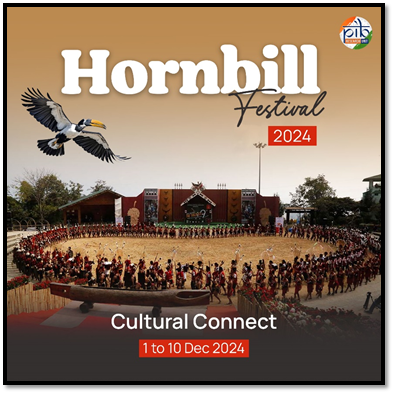
- 06 Dec 2024
In News:
The Hornbill Festival, a vibrant celebration of Nagaland's culture and tourism, is an annual event that takes place from December 1 to 10.
About the Hornbill Festival:
- Origin: First held in the year 2000.
- Purpose: The festival aims to foster inter-tribal communication, preserve the cultural heritage of Nagaland, and showcase the harmonious blending of traditional and modern elements.
- Significance: Referred to as the “festival of festivals,” it has become an essential part of the state’s cultural calendar.
- Organizers: It is organized by the Tourism and Art & Culture Departments of the Government of Nagaland.
- Location: The festival takes place annually at the Naga Heritage Village in Kisama, located about 12 kilometers from Kohima.
- Cultural Showcase: Over the years, it has evolved into a significant celebration that highlights the vibrant and diverse cultural traditions of the various tribes in Nagaland.
- Name Origin: The festival is named after the Hornbill bird, which holds cultural importance among the Naga tribes.
- Theme of the 2024 Hornbill Festival:The 2024 edition is themed “Cultural Connect,” celebrating the rich heritage and cultural diversity of Nagaland. The festival continues to merge modernity and tradition through a variety of activities, including Naga wrestling, traditional archery, food stalls, fashion shows, beauty contests, and musical performances. Additionally, the Archives Branch is presenting a special exhibition titled “Naga-Land & People in Archival Mirror” in partnership with the National Archives of India, offering a deeper look at the region's history and cultural practices.
- Recent Milestone:This year marks the 25th anniversary of the Hornbill Festival.
Festival Highlights:
- Annual Event: Held each year since its inception in 2000, it serves as a major cultural event for Nagaland.
- Symbolism: Named after the Hornbill bird, which represents boldness and grandeur in Naga folklore.
- Location: The festival is hosted at Kisama Heritage Village, a cultural center that preserves Naga traditions with 17 indigenous houses (Morungs) that represent each of the tribes.
- Cultural Diversity: Nagaland, known as the “Land of Festivals,” is home to 17 major tribes, each with its distinct festivals and cultural practices. The Hornbill Festival promotes inter-tribal interaction and celebrates the state’s rich heritage.
- National Significance: Reflecting India’s unity in diversity, the festival serves as a platform for different cultural practices to coexist, strengthening the nation’s collective identity.
Notre-Dame Cathedral
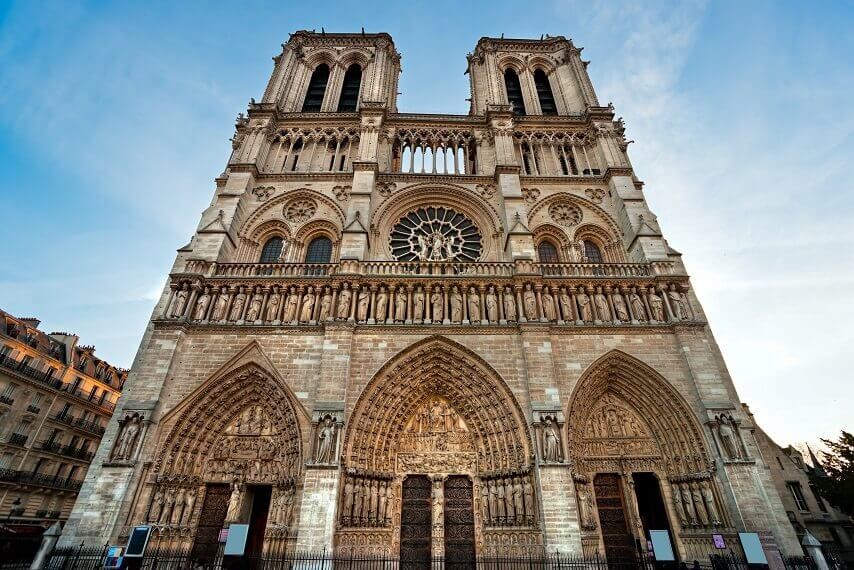
- 03 Dec 2024
In News:
The Notre-Dame Cathedral in Paris, a landmark symbol of French Gothic architecture, is set to reopen on after undergoing extensive renovations following a devastating fire in April 2019.
Historical and Architectural Significance:
- Location: Situated on Île de la Cité in the Seine River, Paris.
- Construction: Began in 1163 under Bishop Maurice de Sully and completed in 1260, showcasing a blend of early Gothic to Rayonnant Gothic styles.
- Key Features: The cathedral is renowned for its rib vaults, flying buttresses, stained-glass windows, and sculpted gargoyles.
- Cultural Importance: It has been a stage for significant historical events, including Napoleon Bonaparte's coronation in 1804. It also houses the Holy Crown of Thorns and relics from the crucifixion of Jesus.
- Literary Legacy: Featured in Victor Hugo's "The Hunchback of Notre-Dame" (1831), which drew attention to its architectural and historical significance.
Modern History and Renovation:
- The cathedral endured historical events such as the French Revolution, World War II, and attacks during the Protestant Reformation.
- In April 2019, a fire severely damaged the roof and spire, sparking an international outpouring of support for its restoration.
- Renovation efforts began soon after, involving more than 1,000 craftspeople, with President Emmanuel Macron calling it “the project of the century.”
Construction and Modifications Over Centuries:
- The Notre-Dame was a model for early Gothic architecture and has undergone multiple renovations, including the addition of flying buttresses and other structural changes during the 13th and 14th centuries.
- Modifications continued through the Renaissance and Classical periods, reflecting changing artistic styles and the political moods of the time.
Significance in French History:
- Witness to History: The cathedral has been central to 800 years of French history, serving as a backdrop for both brilliant and tumultuous events.
- Religious and Political Symbolism: It was the heart of Paris' religious and political life, acting as a symbol of the intertwined relationship between the church and the monarchy.
MahaKumbh Mela 2025
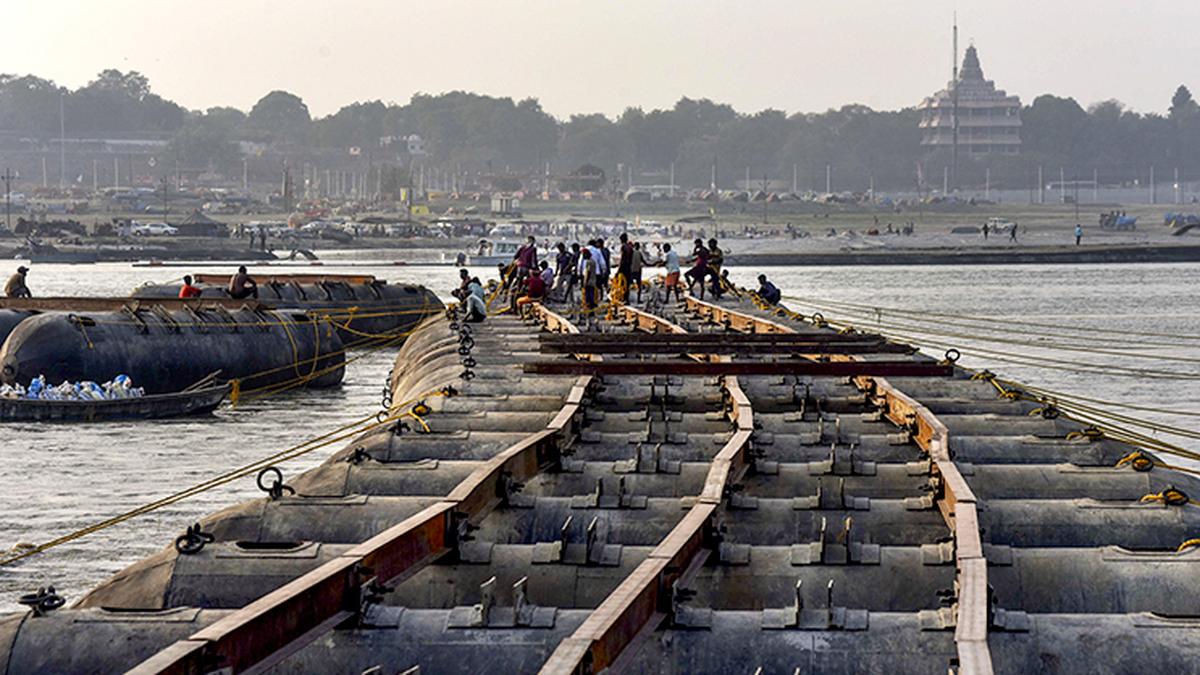
- 03 Dec 2024
In News:
- On December 1, 2024, the Uttar Pradesh government declared the MahaKumbh Mela area as a temporary district for four months.
- The new district will be known as the MahaKumbh Mela District, to streamline management for the 2025 MahaKumbh.
- Over 5,000 hectares of land will be part of this district, including 66 revenue villages from four tehsils: Sadar, Sorav, Phulpur, and Karchana.
Key Administrative Changes:
- Mela Adhikari (Kumbh Mela Officer) will act as the District Magistrate (DM) and will hold powers of Executive Magistrate, District Magistrate, and Additional District Magistrate.
- The Mela Adhikari will have authority under the Indian Civil Defense Code, 2023, and the Uttar Pradesh Revenue Code, 2006.
- The Mela Adhikari can appoint an Additional Collector for the district.
MahaKumbh Mela Overview:
- The Kumbh Mela is recognized by UNESCO as an Intangible Cultural Heritage of Humanity.
- It is the largest peaceful congregation of pilgrims, with participants bathing in sacred rivers at locations including Prayagraj, Haridwar, Ujjain, and Nashik.
- The PrayagrajKumbh takes place at the Sangam, the confluence of the Ganges, Yamuna, and the mythical Saraswati rivers.
- The event spans over a month and includes religious, cultural, and social activities, along with massive infrastructural setup including tented townships, civic facilities, and security measures.
Global Engagement Scheme
- 30 Nov 2024
In News:
- The Ministry of Culture plays a pivotal role in promoting India’s rich cultural heritage across the globe through its Global Engagement Scheme.
- The scheme is designed to enhance India's cultural image internationally while fostering people-to-people connections and strengthening bilateral cultural ties with other nations.
- The scheme has three key components: Festival of India, Grant-in-aid to Indo-Foreign Friendship Cultural Societies, and Contribution Grants.
Key Components of the Global Engagement Scheme:
- Festival of India (FoI):
- Purpose: The Festival of India is organized abroad to celebrate and promote India's diverse culture. It provides a platform for artists from various cultural fields, including Folk Art (folk music, dance, theatre, puppetry), Classical and Traditional Dance, Classical and Semi-Classical Music, Experimental/Contemporary Dance, and Theatre.
- Impact: Since 2013-14, 62 Festivals of India have been held in different countries, with over 2,348 artists, including folk artists, participating. These festivals serve as a means to promote Indian folk art, culture, and music internationally.
- Artist Participation: Folk artists are remunerated with a performance fee of ?35,000 for the leader/main artist and ?7,000 for accompanying artists per performance.
- Grant-in-aid to Indo-Foreign Friendship Cultural Societies:
- Objective: This scheme supports cultural societies abroad that aim to strengthen cultural exchanges and promote Indian art forms. Grants are provided to these societies to organize various cultural programs and activities, fostering closer cultural ties between India and the host countries.
- Support to Folk Artists: This scheme also aids in bringing folk art to the global stage, showcasing India's traditional performances.
- Contribution Grant:
- Objective: The contribution grant is used for India’s membership in international organizations like UNESCO, ICOM, and the World Heritage Fund. This component also facilitates Indian participation in international meetings and helps host global events, further showcasing India’s cultural wealth.
Support for Veteran Artists:
In addition to promoting folk culture globally, the Ministry of Culture supports veteran artists through the Financial Assistance for Veteran Artists scheme. This initiative is aimed at supporting elderly and economically disadvantaged artists (aged 60 and above) who have made significant contributions to their respective art forms, including folk art.
- Financial Support: Artists selected under this scheme receive up to ?6,000 per month, adjusted for any state pension they may already receive.
Regional Contributions:
- The Ministry has empaneled folk artists and groups across India for participation in these international cultural exchanges. For instance, two folk artists/groups and one Kathak artist from Uttarakhand are currently empaneled.
- Notably, a troupe from Uttarakhand participated in the Freedom 70 Cultural Event in Cuba and the Dominican Republic in August 2017, showcasing the diversity of Indian folk art.
- The Financial Assistance for Veteran Artists has also benefitted several artists from Uttarakhand, with four artists from the state receiving support over the past two years.
Mahabodhi Mahotsav at Sanchi
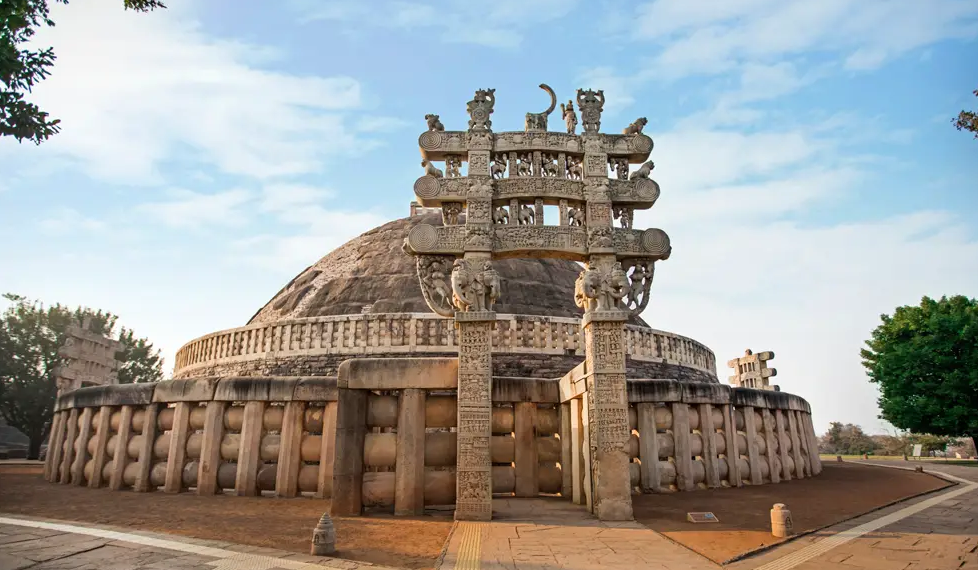
- 30 Nov 2024
In News:
A two-day Mahabodhi Mahotsav is currently being held at the Great Stupa in Sanchi, Madhya Pradesh, a UNESCO World Heritage Site.
Key Highlights:
- The festival will include religious ceremonies and cultural activities centered around the relics of Lord Buddha’s chief disciples, Sariputra and Maudgalyayana.
- Cultural Significance: The Mahotsav serves as a platform for celebrating and reaffirming the cultural and spiritual heritage of the region, with a focus on the teachings of Lord Buddha.
About Sanchi Stupa:
Sanchi Stupa is one of the oldest and most significant monuments of Buddhist architecture in India. It has stood as a symbol of Buddhist history, spirituality, and culture for over two millennia.
- Historical Importance:Commissioned by Emperor Ashoka in the 3rd century BCE, the stupa was later expanded by the Shunga and Satavahana rulers. It stands as a testament to the spread of Buddhism across India and beyond.
- Architectural Features:
- Hemispherical Dome (Anda): The large dome represents the universe, encapsulating the essence of Buddhist cosmology.
- Chatras: The umbrella-like structures on top of the dome symbolize divine protection and royalty.
- Harmika: A small balcony on the dome, which is considered the abode of the gods.
- Medhi: The base of the stupa, which stores sacred relics.
- Toranas: Four intricately carved gateways that depict scenes from the life of Buddha and various Jataka tales. These gateways point to the four cardinal directions, symbolizing the universality of Buddha’s teachings.
- Vedica: The railings surrounding the stupa serve as sacred enclosures.
- Paradakshinapatha: Pathways for circumambulation, allowing devotees to walk around the stupa as a sign of respect.
- Symbolism:The stupa’s architecture is an example of early Buddhist aniconism, where the Buddha is not directly depicted but is represented symbolically through footprints, wheels, or empty thrones.
- Inscriptions:The stupa contains important inscriptions, including the Ashokan Lion Capital and inscriptions in Brahmi and Kharosthi scripts, reflecting the historical significance of the site.
- UNESCO World Heritage Status:In 1989, Sanchi Stupa was declared a UNESCO World Heritage Site, recognizing its exceptional historical and cultural importance as a center for Buddhist art, architecture, and philosophy.
Significance of the Mahabodhi Mahotsav:
The Mahabodhi Mahotsav at Sanchi not only provides a spiritual experience but also highlights the historical and cultural legacy of Buddhism in India. The event brings attention to the preservation and promotion of Buddhist heritage, reflecting India’s rich diversity and commitment to maintaining its ancient traditions. Through this festival, Sanchi continues to be a center of pilgrimage and learning, attracting visitors from around the world who seek to understand and experience the teachings of Lord Buddha.
Ngada Festival
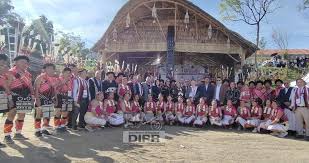
- 29 Nov 2024
In News:
The Rengma Naga tribe concluded a two-day celebration of the Ngada festival-cum-Mini Hornbill Festival at the Tseminyu RSA ground in Nagaland.
Ngada Festival Overview:
- Celebration: It is an annual celebration observed by the Rengma Naga tribe, marking the end of the agricultural cycle.
- Duration: Typically, an eight-day festival, it is celebrated towards the end of November.
- Significance: It is a festival of thanksgiving, joy, and cultural unity, with a focus on gratitude for the harvest and remembrance of departed souls.
Cultural and Ritual Aspects:
- Rituals: The festival involves rituals for protection from misfortunes, such as fire and evil spirits, as well as prayers for peace and prosperity in the community.
- Agricultural Link: The festival is celebrated after the harvest season, symbolizing the end of the agricultural cycle and the beginning of the storage of crops.
- Official Announcement: The village priest announces the start of the festival, and preparations begin shortly after.
Importance of Ngada:
- Gratitude for the Harvest: The festival is a celebration of the hard work of the agricultural year and the bountiful harvest.
- Cultural Identity: The festival serves as a vital reminder of the Rengma Naga’s cultural heritage and traditions, helping to preserve them for future generations.
- Symbol of Unity: It fosters cultural unity and strengthens community bonds within the tribe.
Tribal Demographics:
- Population: The Rengma Naga tribe has a population of around 62,951 in Nagaland and 22,000 in Assam (according to the 2011 Census of India).
- Ethnic Identity: The Rengmas belong to the Tibeto-Burman ethnic group and identify themselves as Njong or Injang.
Historical and Cultural Background:
- Migration: It is believed that the Rengmas, along with other Naga tribes, migrated from Southeast Asia, crossing the Yunnan Mountain ranges, and eventually settled in the upper Burma region.
- Slavery: Historically, slavery was practiced among the Rengmas, with slaves known as menugetenyu and it sakesa. However, by the time the British arrived, slavery was in decline, and no Rengma tribespeople were known to be slaves.
Economy:
- Agricultural Lifestyle: The Rengma Naga are primarily agriculturalists, relying on Jhum cultivation (shifting cultivation) and wet rice cultivation.
- Crops Grown: They grow staple crops like paddy, along with seasonal crops and fruits.
Religion:
- Traditional Beliefs: Traditionally, the Rengma Naga worship supernatural beings.
- Christianity: Today, most of the Rengma tribe has converted to Christianity.
Bali Jatra Cuttack Utsav 2024
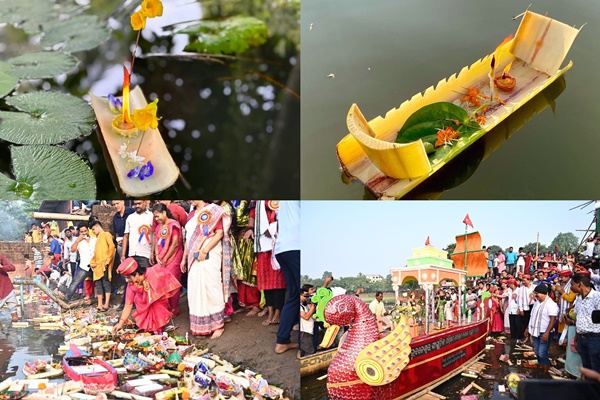
- 17 Nov 2024
In News:
- Bali Jatra 2024 is being held from November 15 to November 22 in Cuttack, Odisha.
- The festival celebrates Odisha’s ancient maritime history and its cultural and trade links with Southeast Asia.
- The event has gained international attention due to the participation of diplomats and cultural troupes from ASEAN, BIMSTEC, and Pacific Island countries.
Historical and Cultural Significance:
- Bali Jatra ("Voyage to Bali") commemorates the 2,000-year-old maritime trade routes between ancient Kalinga (modern-day Odisha) and Southeast Asia, including regions like Bali, Java, Sumatra, Borneo, Burma (Myanmar), and Sri Lanka.
- The festival honors the skills of Kalinga sailors who contributed to the prosperity of the region through trade, including commodities like pepper, cinnamon, cardamom, silk, camphor, gold, and jewelry.
- It highlights Odisha’s maritime legacy and the cultural exchanges between India and Southeast Asia, particularly the cultural influence of Odia merchants on Bali.
Commercial and Economic Aspects:
- Bali Jatra is Asia’s largest open-air trade fair, featuring over 2,500 stalls selling a variety of products including artisanal crafts, household items, and food.
- The event is a major commercial activity with business transactions estimated to exceed ?100 crore over the course of the festival.
- The festival provides an opportunity for both local and national traders to exhibit products at competitive prices.
Cultural Performances and International Participation:
- The festival includes daily cultural performances showcasing Odissi dance, Chhau dance, Bihu, Mahari, Gotipua, Sambalpuri, and Santali folk dances.
- This year, cultural troupes from countries like Indonesia, Thailand, and Sri Lanka have participated, enhancing the international profile of the festival.
- Diplomats, including Ambassadors, High Commissioners, and Heads of Mission from 14 countries attended the inaugural ceremony.
Historical Background of Bali Jatra:
- The festival is linked to Kartika Purnima, the full moon night of the month of Kartika, marking the annual migration of traders from Odisha to Southeast Asia.
- Traders used boats called Boitas to travel to distant lands, which is now symbolically represented in the festival.
- The event’s cultural significance extends to the recognition of Odisha’s historic maritime routes, with ports like Tamralipti, Manikpatna, Chelitalo, Palur, and Pithunda playing key roles in global trade from as early as the 4th century BC.
Kalinga's Maritime Influence:
- The Kalinga Empire (present-day Odisha) had significant influence over the Bay of Bengal, referred to as the Kalinga Sea.
- Kalinga’s dominance in maritime trade is reflected in Kalidasa's Raghuvamsa, where the King of Kalinga is called "Lord of the Sea."
- Kalinga's Boitas (ships) were instrumental in connecting India with the Southeast Asian archipelago, including Bali.
Cultural Linkages with Bali:
- Odisha's trade with Bali influenced the culture, religion, and architecture of the region.
- Balinese Hinduism today still reflects Indian influences, with worship of Hindu deities like Shiva, Vishnu, Brahma, and Ganesha.
- The MasakapankeTukad festival in Bali, similar to Bali Jatra in Odisha, is a tribute to the maritime ancestors of Bali and commemorates the long-standing cultural ties.
Recognition and Milestones:
- Bali Jatra 2022 achieved a Guinness World Record for creating the largest collection of origami sculptures.
- The festival has evolved from a traditional trade fair to an international cultural event that highlights Odisha’s historical role in global trade and cultural exchanges.
Commemoration of Birsa Munda’s 150th Birth Anniversary
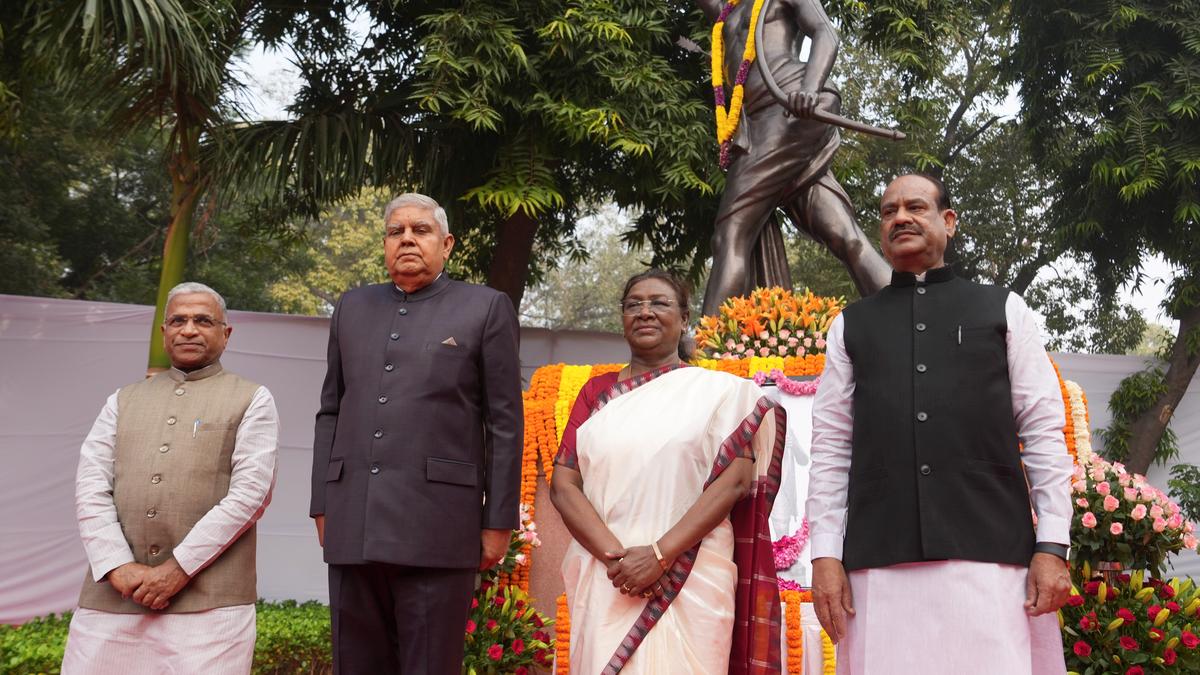
- 16 Nov 2024
In News:
On November 15, 2024, Prime Minister Narendra Modi launched a commemorative stamp and coin to mark the 150th birth anniversary of Birsa Munda, a prominent tribal freedom fighter and leader from Jharkhand.
Key Points about Birsa Munda:
- Iconic Tribal Leader: Birsa Munda, born in 1875, is often referred to as ‘Bhagwan’ (God) and ‘DhartiAaba’ (Father of the Earth) by the tribal communities. He is celebrated for his leadership in the fight against the exploitation of tribal people by both the British and non-tribal settlers.
- Ulgulan Movement: Birsa Munda led the Ulgulan (Great Tumult) against the alienation of land, forced labour, and the illegal appropriation of tribal land in the Chotanagpur Plateau. His efforts were critical in mobilizing tribal communities and challenging the colonial order.
- Religious and Social Reformer: He founded the Birsait faith, focusing on spiritual practices that emphasized prayer, worship of God, and abstaining from alcohol, fostering unity and resilience among tribal communities.
- Death and Legacy: Birsa Munda died in 1900 in British custody at the young age of 25. Despite his early death, his legacy lives on as a symbol of tribal pride and resistance.
- Janjatiya Gaurav Diwas: Since 2021, the Government of India observes November 15 as Janjatiya Gaurav Diwas (Tribal Pride Day) in honor of Birsa Munda's birth anniversary, recognizing the contributions of tribal communities and their role in India's history.
- Highlights of the 2024 Commemoration:
- Commemorative Stamp and Coin: To mark the 150th birth anniversary, the Prime Minister unveiled a commemorative stamp and coin in Bihar's Jamui district. This serves as a tribute to Munda's sacrifices for the country.
- Year-Long Celebrations: The 2024 event marks the beginning of year-long celebrations to commemorate Birsa Munda’s legacy, with a focus on tribal welfare and recognition of their historical contributions.
- Welfare Projects and Initiatives:
- Prime Minister Modi inaugurated and laid the foundation for tribal welfare projects worth over ?6,640 crore.
- The PM launched two tribal freedom fighter museums and tribal research institutes.
- 1.16 lakh homes were sanctioned under the Dharti Aba Janjati Gram Utkarsh Yojana.
- 25,000 homes for Particularly Vulnerable Tribal Groups (PVTGs) were approved under the Pradhan Mantri Janjati Adivasi Nyaya Maha Abhiyan (PM-JANMAN) scheme.
- The launch of 50 mobile medical units aims to improve healthcare access in tribal regions.
- 10 Eklavya Model Residential Schools (EMRS) were inaugurated to promote education for tribal students.
- DhartiAabaJanjatiya Gram Utkarsh Abhiyan:
- The DhartiAabaJanjatiya Gram Utkarsh Abhiyan aims to address gaps in social infrastructure, health, education, and livelihood in tribal-majority villages.
- The initiative is being implemented across 63,000 villages with the involvement of 17 ministries and departments.
- PM-JANMAN Scheme for PVTGs:
- Launched in November 2023, the PM-JANMAN initiative aims to uplift Particularly Vulnerable Tribal Groups (PVTGs) through various interventions like safe housing, clean drinking water, healthcare, education, and sustainable livelihoods. The scheme also supports Van Dhan Vikas Kendras for the trade of forest produce and solar-powered systems for households in tribal areas.
1st Bodoland Mohotsav
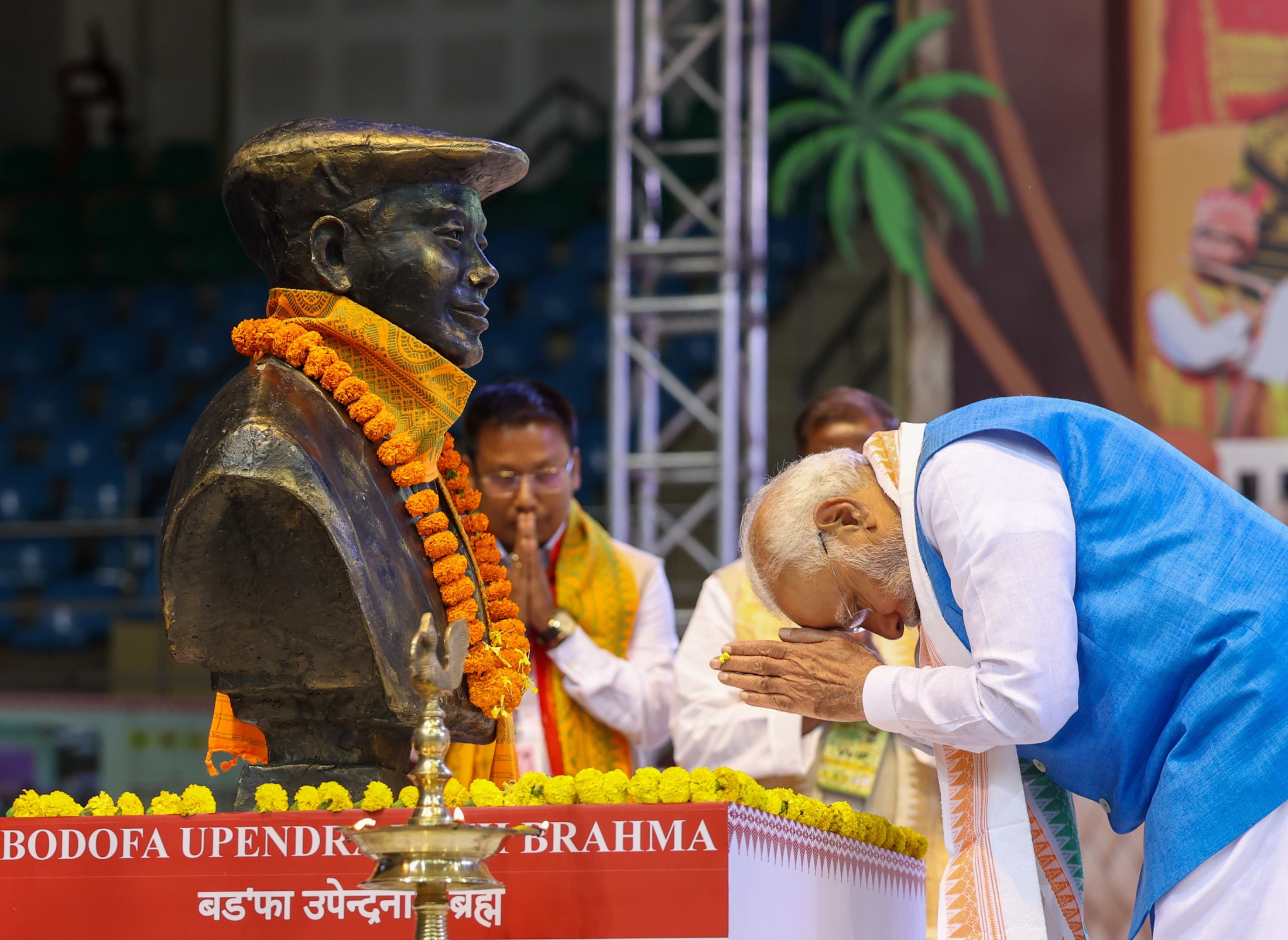
- 16 Nov 2024
In News:
- Recently, Prime Minister Narendra Modi inaugurated the 1st Bodoland Mohotsava two-day event focused on language, literature, and culture.
- Objective: Aims to promote peace, unity, and a vibrant Bodo society through cultural integration. The festival celebrates the rich Bodo culture and heritage.
Historical Context and Peace Initiatives:
- End of Violence: The event marks the end of 50 years of violence, following the Bodo Peace Accord (2020), which ended conflict in Bodoland and led to a path of peace and development.
- Peace Agreements: The Bodo Peace Accord served as a catalyst for other peace settlements, such as the KarbiAnglong Accord, Bru-Reang Accord, and NLFT-Tripura Accord.
Development in Bodoland Post-Peace Accord:
- Impact of the Peace Accord:
- Over 10,000 youth in Assam have renounced violence and joined the mainstream of development.
- Increased mutual trust between the people and the government.
- Economic Assistance:
- Rs 1,500 crore special package by the central government.
- Rs 700 crore spent on infrastructure development in education, health, and culture in Bodoland.
- Rs 5 lakh assistance for families affected by the Bodo conflict.
Government Support for Socio-Economic Development:
- Skill Development & SEED Mission:Focus on skilling, entrepreneurship, employment, and development through the SEED Mission for youth empowerment.
- Rehabilitation of Former Cadres:
- Over 4,000 former cadres of the National Democratic Front of Bodoland (NDFB) have been rehabilitated.
- Many youths have been recruited into Assam Police.
- Tourism & Employment:Growing tourism in Bodoland, with parks like Manas National Park and Raimona National Park, creating employment opportunities for youth.
Cultural Promotion:
- Bodo Culture and GI Tags:Promoting Bodo crafts like Aronnaye, Dokhona, Gamsa, etc., that have received Geographical Indication (GI) tags to preserve cultural identity.
- Bodoland Handloom Mission & Sericulture:Government efforts to promote sericulture and the Bodoland Handloom Mission to sustain Bodo weaving traditions.
- Literary Celebrations:
- Continuous Bodoland Literary Festival in Kokrajhar, enhancing the importance of Bodo literature and language.
- Celebration of Bodo Sahitya Sabha’s 73rd foundation day.
Key Government Initiatives for Development:
- Infrastructure Development:
- Rs 800 crore annually being spent by the Assam government for the development of Bodoland.
- Focus on healthcare, education, and employment.
- Medical Education:Expansion of medical colleges in Assam from 6 to 12, with plans for 12 more new colleges.
PM Vishwakarma Yojana
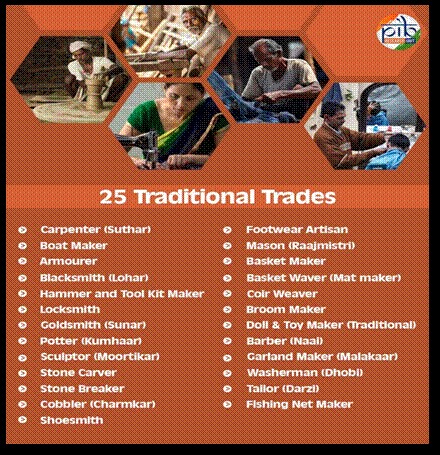
- 08 Nov 2024
In News:
The PM Vishwakarma Yojana is a landmark initiative by the Indian government aimed at revitalizing traditional craftsmanship and empowering artisans and craftspeople, often referred to as Vishwakarmas. Launched on September 17, 2023, during Vishwakarma Jayanti, the scheme highlights the government's commitment to preserving India's rich cultural heritage and supporting the unorganized sector.
Key Highlights
- Objective:
- To strengthen the Guru-Shishya tradition and improve the quality, reach, and marketability of products and services by artisans.
- To integrate Vishwakarmas into domestic and global value chains, making them self-reliant.
- To alleviate poverty by supporting rural and urban artisans across India.
- Financial Outlay:,Fully funded by the Union Government with a ?13,000 crore budget spanning five years (2023–2028).
- Eligibility:
- Open to rural and urban artisans and craftspeople involved in 18 traditional crafts, such as blacksmithing, goldsmithing, pottery, boat making, and carpentry.
- Covers 5 lakh families in the first year and aims to reach 30 lakh families over five years.
- Key Benefits:
- Financial Support:
- Collateral-free credit of ?1 lakh (first tranche) and ?2 lakh (second tranche) at a concessional 5% interest rate.
- Government provides 8% interest subvention upfront to banks.
- Toolkit Incentive: ?15,000 via e-vouchers for acquiring modern tools.
- Training and Skill Development: Basic and advanced skill training to create industry-ready manpower.
- Digital and Marketing Incentives: Encourages digital transactions and provides marketing support.
- Recognition: Beneficiaries receive a PM Vishwakarma Certificate and ID Card.
- Market Linkage: Facilitates better market access for artisan products.
- Financial Support:
- Achievements (as of Nov 4, 2024):
- 25.8 million applications received.
- 2.37 million artisans registered after verification.
- Over 1 million artisans benefited from toolkit incentives.
Significance
- Promotes inclusive development by supporting an underserved segment of the workforce.
- Recognizes and supports traditional skills passed down through generations, preserving India’s cultural diversity.
- Enhances productivity and competitiveness by integrating artisans into MSME sectors.
- Encourages sustainability through the promotion of handmade, eco-friendly crafts.
Key Institutions Involved
- Ministry of Micro, Small, and Medium Enterprises (MSME): Oversees implementation.
- Common Services Centres (CSC): Facilitates registration through biometric-based PM Vishwakarma Portal.
Challenges Addressed
- Lack of access to modern tools and financial support.
- Insufficient market linkages and exposure for traditional crafts.
- Limited opportunities for skill enhancement and product development.
Maha Kumbh Mela 2025
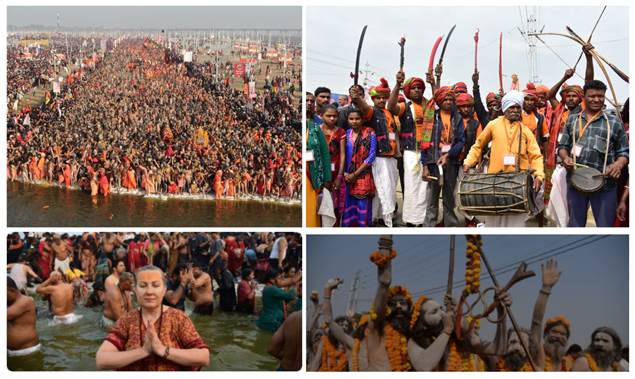
- 07 Nov 2024
In News:
- The Maha Kumbh Mela 2025 will be held in Prayagraj from January 13 to February 26.
- The event is a sacred pilgrimage that draws millions of pilgrims to bathe in the holy waters of the Triveni Sangam (the confluence of the Ganges, Yamuna, and Sarasvati rivers) for spiritual purification and liberation.
Significance and Spiritual Importance
- Sacred Rituals:
- The central ritual is the act of bathing in the holy waters of the confluence, believed to cleanse one’s sins and bring spiritual liberation (Moksha).
- Pilgrims also engage in worship, spiritual discourses, and seek blessings from revered sadhus and saints.
- Auspicious Dates:
- The event includes Shahi Snan (Royal Bath), where prominent saints and their followers bathe on specific dates, marking the beginning of the Mela.
- Paush Purnima marks the start of the auspicious bathing period.
- Cultural Ceremonies:
- The Mela features a grand procession (Peshwai) with Akharas (spiritual orders) on elephants, horses, and chariots.
- Cultural performances, traditional music, dance, and art are also part of the festivities, showcasing India’s vibrant cultural diversity.
Mythological and Historical Roots
- Mythology:
- The Kumbh Mela is deeply embedded in Hindu mythology, symbolizing humanity’s quest for spiritual unity and enlightenment.
- The timing of the event is based on astrological positions of celestial bodies, particularly the Sun, Moon, and Jupiter.
- Historical Significance:
- The origins of the Kumbh Mela trace back over 2,000 years, with references found in the Maurya and Gupta periods.
- Royal Patronage: Emperors like Akbar supported the Mela, symbolizing unity among different religions and cultures.
- British Colonial Era: British officials documented the Mela, fascinated by its scale and ritualistic practices.
- Modern Recognition:
- In 2017, the UNESCO recognized the Kumbh Mela as an Intangible Cultural Heritage of Humanity, underscoring its global significance.
Cultural Celebration and Unity
- Cultural Diversity:
- The Maha Kumbh Mela is a celebration of India's rich cultural heritage, where pilgrims experience traditional crafts, art, music, and dance, alongside spiritual practices.
- International Participation:
- Pilgrims from across the globe attend the Mela, drawn by its message of unity, tolerance, and the universal quest for spiritual growth and peace.
- Message of Unity:
- The Mela serves as a reminder of humanity’s shared desire for self-realization and spiritual fulfillment, transcending national, cultural, and religious boundaries.
First Asian Buddhist Summit in New Delhi
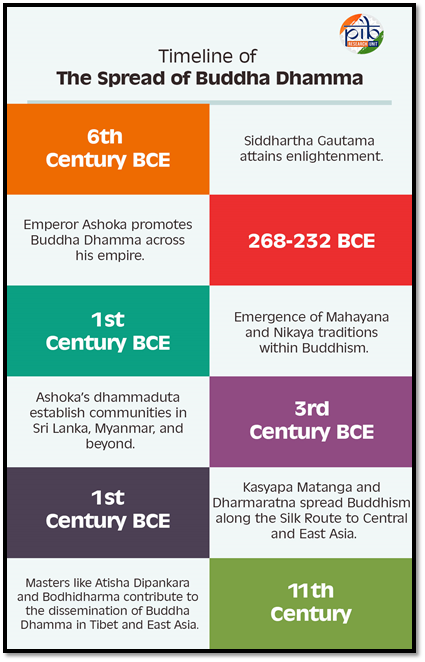
- 04 Nov 2024
In News:
- The Government of India, in partnership with the International Buddhist Confederation (IBC), is hosting the First Asian Buddhist Summit in New Delhi.
- Theme: "Role of Buddha Dhamma in Strengthening Asia."
- Significance: The summit aligns with India’s Act East Policy, focusing on collective, inclusive, and spiritual development across Asia.
- Inauguration: The two-day event will be inaugurated by President Droupadi Murmu on November 5, 2024.
- Participants: Buddhist Sangha leaders, scholars, and practitioners from various Asian Buddhist traditions will gather to promote dialogue, understanding, and address contemporary challenges within the Buddhist community.
Key Themes of the Summit
- Buddhist Art, Architecture, and Heritage
- Focus on preserving and celebrating Buddhist landmarks in India (e.g., Sanchi Stupa, Ajanta Caves).
- Emphasizes the role of Buddhist art in fostering cross-cultural understanding.
- Buddha C?rik? and Dissemination of Buddha Dhamma
- Discusses Buddha’s journeys and how his teachings spread across India and beyond.
- Role of Buddhist Relics in Society
- Relics serve as symbols of Buddha's teachings, promoting devotion, mindfulness, and economic benefits through tourism and pilgrimages.
- Buddha Dhamma in Scientific Research and Well-Being
- Exploration of Buddhist teachings on mindfulness and compassion, and their integration into contemporary scientific practices to enhance well-being.
- Buddhist Literature and Philosophy in the 21st Century
- Delving into timeless Buddhist wisdom that continues to address the human condition, the nature of reality, and paths to enlightenment.
- Exhibition: "India as the Dhamma Setu (Bridge) Connecting Asia," showcasing India's role in the spread of Buddhism and its significance in fostering unity.
India’s Role in Promoting Buddhist Heritage
- Cultural Identity: Buddhism is integral to India's cultural fabric, influencing its national identity and foreign policy.
- Buddhist Tourism Circuit: The Indian government has developed a Buddhist Circuit covering key sites such as Bodh Gaya, Sarnath, and Kapilvastu.
- International Conferences and Symposia: India has hosted several events, including the First Global Buddhist Summit (2023), International Abhidhamma Diwas (2024), and Symposiums on Vipassana Meditation.
- Pali Language Recognition: On October 4, 2024, Pali was granted classical status, recognizing its significance in conveying Buddha’s teachings.
Buddhism’s Influence in Asia
- Historical Context: Buddhism, founded by Siddhartha Gautama in the 6th century BCE, spread across Asia with the support of figures like Emperor Ashoka (268-232 BCE), who promoted peace and harmony through Buddhist teachings.
- Spread of Buddhism: From its origins in India, Buddhism spread to Central Asia, East Asia, and Southeast Asia, adapting to local cultures and creating diverse schools: Theravada, Mahayana, and Vajrayana.
Ningol Chakkouba Festival
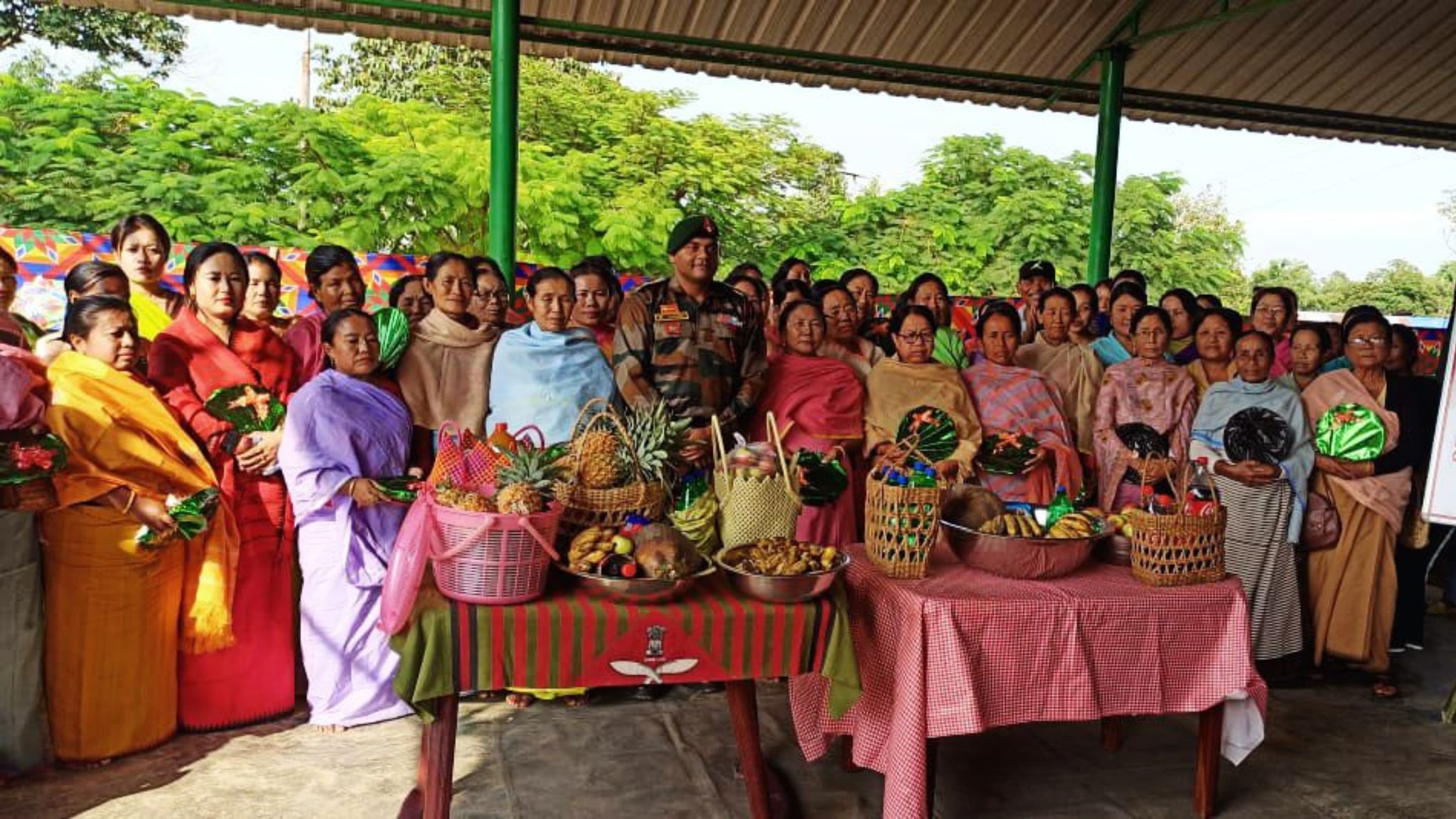
- 04 Nov 2024
In News:
Ningol Chakkouba is one of the biggest festivals of Manipur, primarily celebrated by the Meitei community, but over the years, it has seen participation from various communities.
Key Highlights:
- Date: The festival is celebrated annually on the second day of the lunar month of Hiyangei in the Meitei calendar.
- Main Celebration: The central tradition involves married sisters visiting their maternal homes for a grand feast, joyous reunion, and the exchange of gifts.
- Customary Invitation: A week before the festival, the son of the family formally invites his married sisters to join the celebration.
- Expansion of Celebration: While traditionally celebrated in Manipur, Ningol Chakkouba is now observed in other states and even outside India, where Manipuris are settled.
- Meaning of Ningol Chakkouba:
- Ningol means ‘married woman’.
- Chakouba means ‘invitation for feast’.
- Thus, the festival is a celebration where married women are invited to their parents' home for a special meal.
- Inclusion of Other Communities: Although originally a Meitei tradition, Ningol Chakkouba is now celebrated by various communities due to its emphasis on family reunion, happiness, and promoting peace and harmony in society.
- Cancellation in 2023: The festival was not held in the previous year due to ethnic violence in the state.
Replicas of Konark Wheels at Rashtrapati Bhavan
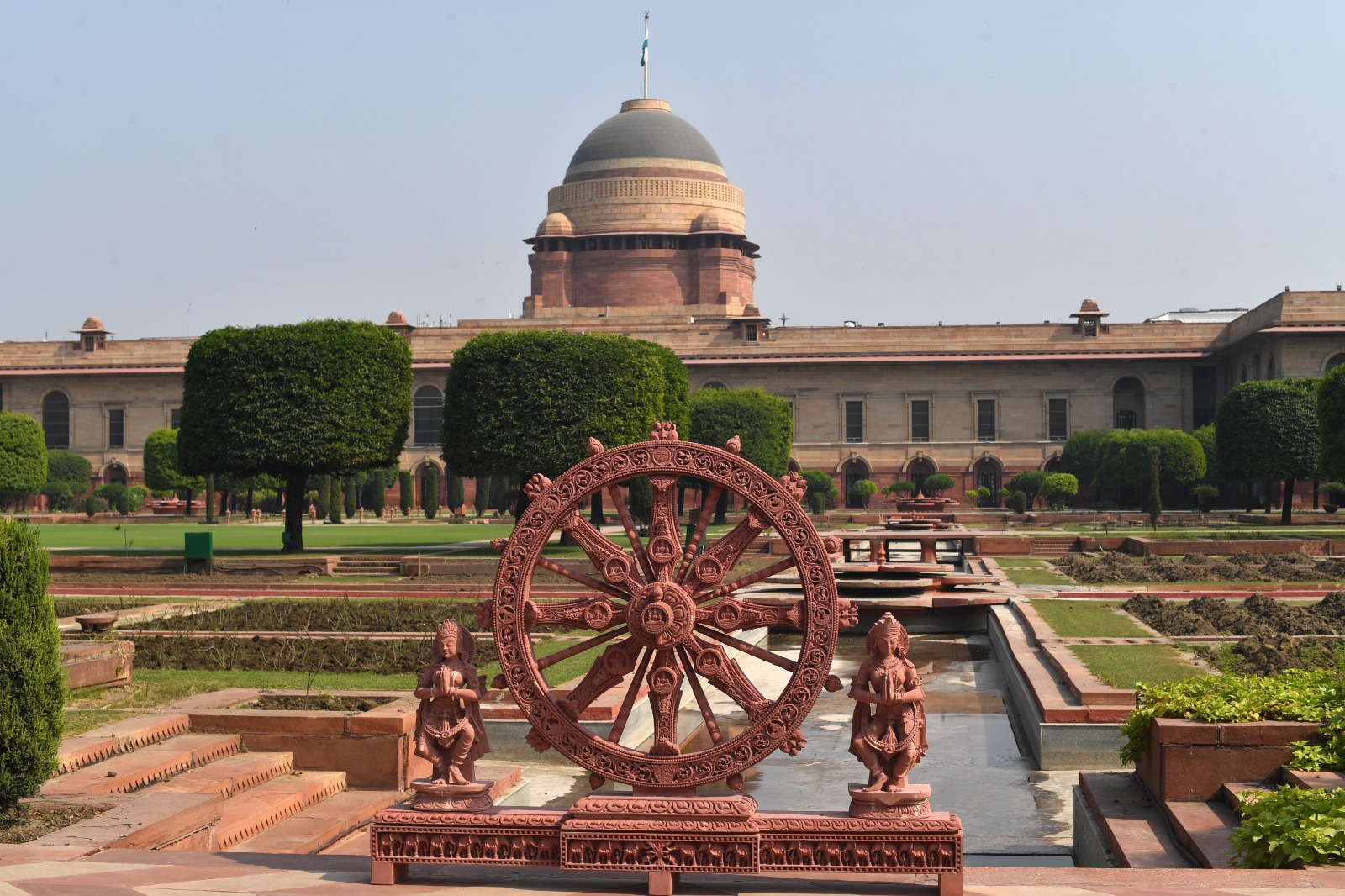
- 30 Oct 2024
In News:
- Four replicas of the Konark wheels, made of sandstone, have been installed at the Rashtrapati Bhavan Cultural Centre and Amrit Udyan.
- This initiative is aimed at showcasing India’s rich cultural heritage and promoting traditional historical elements among visitors to Rashtrapati Bhavan.
Significance of the Konark Sun Temple:
- Historical Background: The Konark Sun Temple was built in the 13th century under King Narasimhadeva I of the Eastern Ganga Dynasty in Konark, Odisha.
- Architectural Design: The temple is a colossal stone chariot with twelve pairs of intricately carved wheels, symbolizing the chariot of the Sun God.
- Materials Used: Constructed using Khondalite stones, the temple features detailed carvings that depict mythology and cultural life.
- Astronomical Significance: The temple's orientation is designed to capture the first light of the sun, reflecting ancient Indian knowledge of astronomy.
- UNESCO World Heritage Status: The Konark Sun Temple was declared a UNESCO World Heritage Site in 1984, recognizing its architectural and historical importance.
Symbolism of the Konark Wheel:
- Time and Progression: The Konark wheel represents time (Kalachakra), progression, and democracy. Its 24 spokes symbolize ancient Indian wisdom and the passage of time.
- Sundial Function: The wheel was historically used as a sundial in the temple, marking the passage of time and symbolizing India’s commitment to progress and resilience.
- National Emblem: The Konark wheel's design is also reflected in the Ashoka Chakra, the wheel on the national flag of India, symbolizing the nation’s resolve towards progress.
Cultural Heritage at Rashtrapati Bhavan:
- The installation of these replicas is part of a broader effort to introduce and promote traditional cultural and historical elements at Rashtrapati Bhavan.
- The Rashtrapati Bhavan Cultural Centre and Amrit Udyan serve as platforms to exhibit India’s diverse artistic legacy to visitors, allowing them to experience the grandeur of ancient Indian architecture and its cultural significance.
National Mission for Manuscripts (NMM)
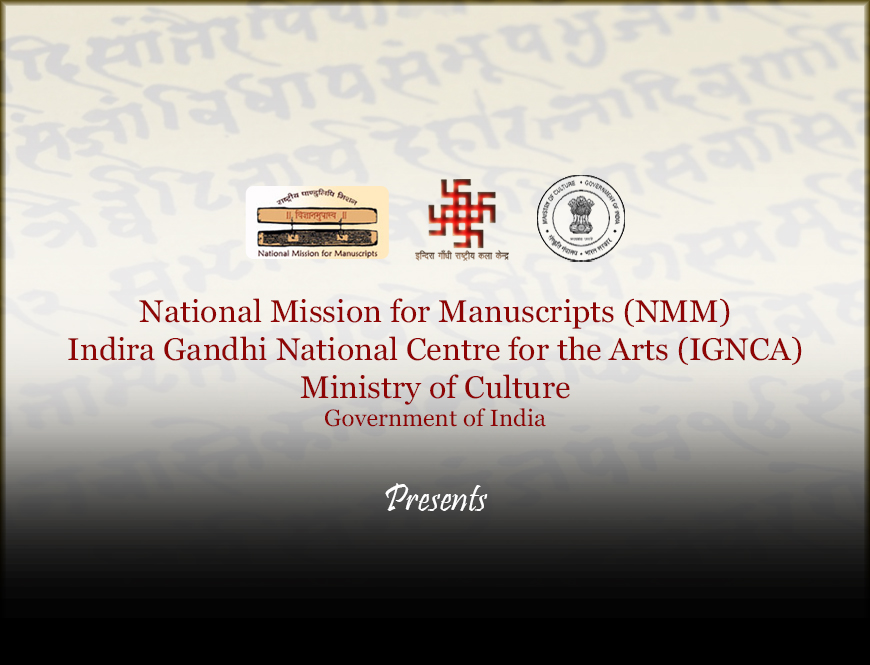
- 26 Oct 2024
In News:
- The Union Ministry of Culture plans to revive and relaunch the National Mission for Manuscripts (NMM) to enhance the preservation and accessibility of India’s ancient texts.
- The mission’s objective is to document, conserve, digitize, and disseminate India’s rich manuscript heritage, ensuring their protection and public access.
Formation of a New Autonomous Body:
- The National Mission for Manuscripts (NMM) is likely to be restructured into an autonomous body called the National Manuscripts Authority, which will be under the Ministry of Tourism and Culture.
- The new body will address the challenges and gaps in manuscript preservation and management, offering more focused and flexible governance.
Background and Achievements:
- Established in 2003, the NMM has been part of the Indira Gandhi National Centre for Arts (IGNCA).
- Key achievements:
- 52 lakh manuscripts have had metadata prepared.
- Over 3 lakh manuscripts have been digitized, though only one-third have been uploaded for public access.
- Preventive and curative conservation of over 9 crore folios of manuscripts has been undertaken over the last 21 years.
- The NMM has set up 100 Manuscripts Resource Centres and Manuscripts Conservation Centres across India.
Current Challenges and Gaps:
- Data Uploading and Access:
- Of the 130,000 digitized manuscripts, only 70,000 are accessible online due to the absence of a comprehensive access policy.
- A significant portion (around 80%) of manuscripts areprivately owned, restricting public access and usage.
- Digitization Mismatch:
- There have been concerns about discrepancies between the digitized data and the original manuscripts, which requires correction to ensure authenticity and accuracy.
- Lack of Comprehensive Access Policy:
- Limited public access to manuscripts due to policy restrictions hinders further research and public engagement with this rich heritage.
Scope and Future of NMM:
- India's Manuscript Heritage: India is believed to have around 10 million manuscripts, spread across various regions, languages, scripts, and topics.
- Digitization and Accessibility: Moving forward, the key challenge will be ensuring that a larger proportion of the manuscripts are digitized, uploaded, and made publicly available, particularly from private collections.
- The establishment of the National Manuscripts Authority is expected to streamline efforts and enhance coordination between government bodies, private institutions, and scholars.
Thanjavur Veena
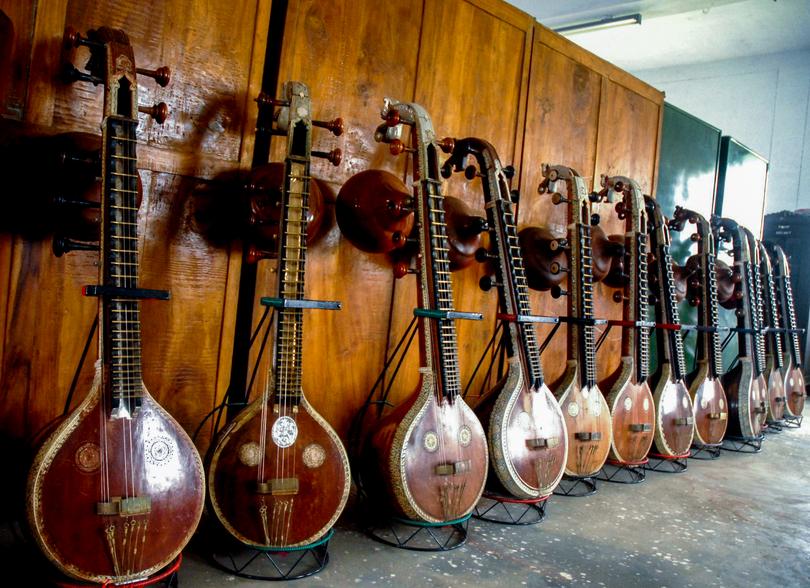
- 03 Sep 2024
In News:
The Thanjavur Veena has the distinction of being the first musical instrument in India to receive the Geographical Indication (GI) tag, highlighting its cultural and artistic significance. Here’s an overview of its features, types, and craftsmanship:
About Thanjavur Veena
- Construction:
- The Thanjavur Veena is known for its unique construction, which comes in two main types:
- Ekantha Veena: Carved from a single block of wood.
- Sada Veena: Composed of three sections—resonator (kudam), neck (dandi), and head—with joints.
- The Thanjavur Veena is known for its unique construction, which comes in two main types:
- Design Features:
- The instrument features 24 fixed frets (mettu), enabling musicians to play a wide range of ragas.
- Traditionally made from the bark of the Jackfruit tree, the bark undergoes extensive testing to ensure quality and durability.
- Craftsmanship:
- The process of crafting a Thanjavur Veena can take 15-20 days, involving cutting, intricate carving, shaping, and assembly of the wood to form the integral parts of the instrument.
Types of Veena
The Thanjavur Veena is one of several types of veenas used in Indian classical music:
- Rudra Veena and Vichitra Veena: Predominantly used in Hindustani classical music.
- Saraswati Veena and Chitra Veena: Associated with Carnatic classical music, with the Saraswati Veena being unique to Thanjavur.
Cultural Significance
- The Saraswati Veena is particularly notable as it is often associated with Goddess Saraswati, the deity of learning and arts, who is frequently depicted holding a veena. This connection emphasizes the instrument's importance in Indian culture and music.
Rakhigarhi
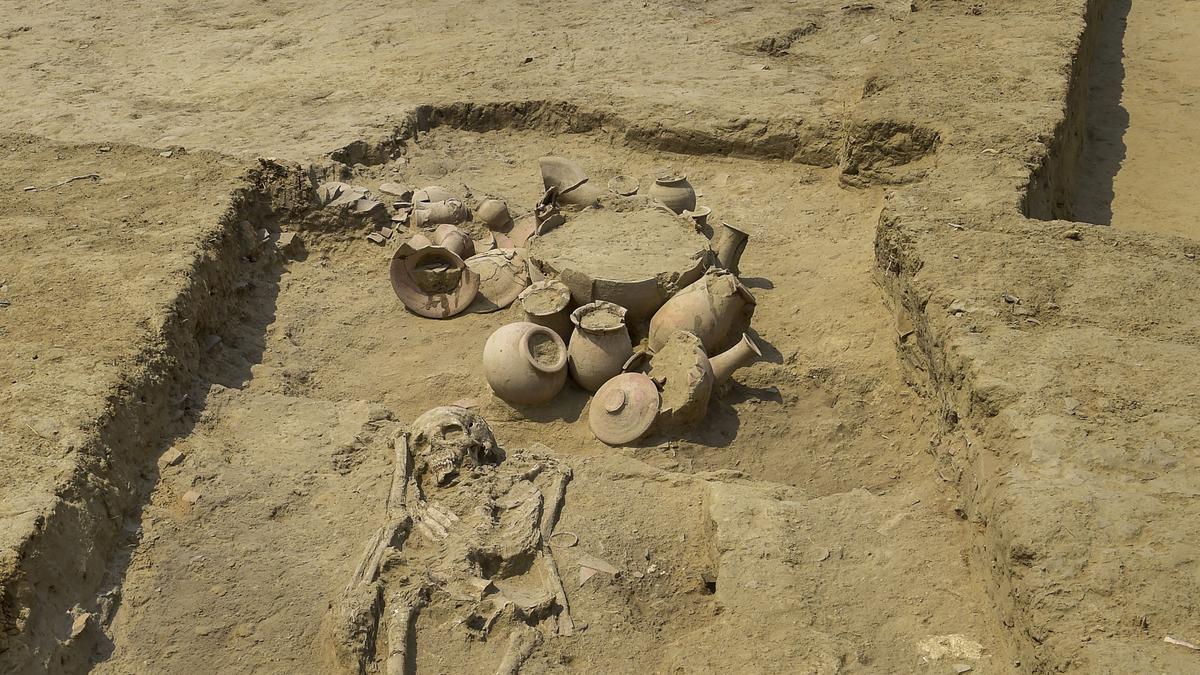
- 06 Apr 2024
Why is it in the News?
The NCERT has proposed updates to school textbooks, including adding findings from DNA analysis of skeletal remains at the Rakhigarhi archaeological site in Haryana and removing references to the Narmada Dam project's impact on tribals, leading to displacement and destitution.
About the Ancient Site of Rakhigarhi:
- The site of Rakhigarhi is one of the five known biggest townships of the Harappan civilization on the Indian subcontinent.
- The other four are:
- Harappa
- Mohenjodaro and Ganveriwala in Pakistan and
- Dholavira (Gujrat) in India
- Five interconnected mounds spread over a huge area from the Rakhigarhi's unique site.
- Two mounds, out of five, were thickly populated.
- This site was excavated by Shri Amarendra Nath of Archeological Survey of India.
- The archaeological excavations revealed a mature Harappan phase represented by a planned township having mud-brick as well as burnt-brick houses with proper drainage systems.
- The ceramic industry is represented by redware, which includes dish-on-stands, vases, jars, bowls, beakers, perforated jars, goblets, and hands.
- Animal sacrificial pits lined with mud brick and triangular and circular fire alters on the mud floor have also been excavated signifying the ritual system of Harappans.
- A cylindrical seal with five Harappan characters on one side and a symbol of an alligator on the other is an important find from this site.
- Other antiquities included blades; terracotta and shell bangles; beads of semiprecious stones, terracotta, shell, and copper objects; animal figurines, toy cart frame and wheel of terracotta; bone points; inscribed steatite seals and sealings.
- The excavations have yielded a few extended burials, which certainly belong to a very late stage, maybe the medieval times.
About Harappan Civilization:
- The Harappan civilization is believed to be one of the oldest world civilizations together with Egypt and Mesopotamia.
- It flourished around 2,500 BC, in the western part of South Asia, in contemporary Pakistan and Western India.
- The Harappan civilization developed along the mighty river, the Indus, and for that reason, it is also known as the Indus Valley Civilization.
- The Harappan civilization is identified as a Bronze-age civilization because many objects have been found that are made up of copper-based alloys.
- For example, the famous ‘dancing girl,’ a bronze figurine that provides an insight into the advances made in art and metallurgy, as well as the hairstyle and ornaments prevalent during the period.
- In the 1920s, the Archaeological Department of India carried out excavations in the Indus Valley wherein the ruins of the two old cities, viz. Mohenjodaro and Harappa were unearthed.
Elephant Endotheliotropic Herpesvirus (EEHV) (DST Gov)
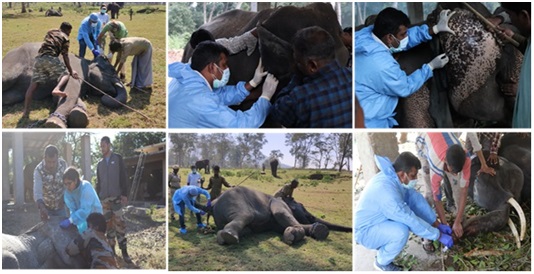
- 06 Dec 2023
Why is it in the News?
The study by ICAR-Indian Veterinary Research Institute (ICAR-IVRI), Izatnagar, Bareilly has found the exact status of EEHV and its subtypes circulating among the Asian elephant population in India.
What is Elephant Endotheliotropic Herpesvirus (EEHV)?
- Elephant endotheliotropic herpesvirus (EEHV) is responsible for one of the most devastating viral infectious diseases in elephants worldwide, especially young Asian elephants.
- EEHV is a double-stranded DNA virus that is classified in the family Herpesviridae.
- The mortality rate is very high (70-85%) and death occurs within a short period (2-4 days).
- In India, the incidence of EEHV-HD was first reported in 1997.
- 9 of 15 potential cases were confirmed from Southern India in wild free-ranging calves in Kerala, Karnataka, Tamil Nadu forest reserves, and Madras Zoo.
- Transmission of the disease: EEHV is mostly spread through mucosal secretions which include:
- Saliva, Breast milk, Nasal secretions, Trunk to trunk contacts etc
- The disease can only affect elephants and is not infectious to humans or other animals.
- Symptoms: Some elephants show symptoms such as reduced appetite, nasal discharge and swollen glands.
- Treatment: Treatment involves a combination of strategies such as antiviral therapy, aggressive fluid therapy to counter haemorrhaging, immuno-stimulant drugs like selenium and Vitamins C and E, as well as antipyretics and analgesics to manage fever.
- It's important to note that there is no definitive cure for herpesviruses in animals or humans since these viruses typically enter a latent state.
Scientists uncover seismic clues in Kopili Fault zone, advancing earthquake preparedness (PIB)
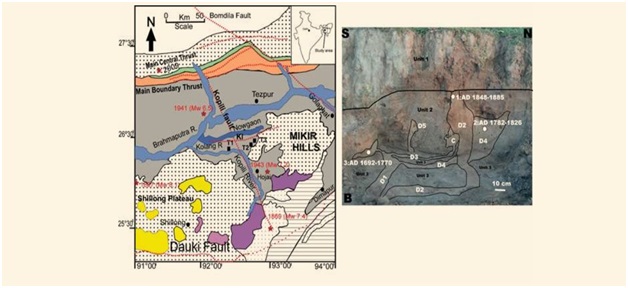
- 06 Dec 2023
Why is it in the News?
Recently, scientists at the Indian Institute of Geomagnetism (IIG) have detected seismogenic liquefaction characteristics within the dynamically active Kopili Fault (KF) zone.
About Kopili Fault Zone:
- The Kopili Fault extends from the western part of Manipur up to the tri-junction of Bhutan, Arunachal Pradesh and Assam.
- It covers a distance of about 400 km and is closer to the Himalayan Frontal Thrust.
- The Kopili fault bisects the Meghalaya Plateau and isolates the Mishmi block from the main part of the plateau.
- The Kopili fault is almost passing through the Kopili River.
- The river Kopili rises in the North Cachar Hills District in Borail Range at an altitude of 1525 meters.
- From a field study, it is observed that the Kopili Fault region is moving in the northeast direction at an average velocity of 28.397N mm/yr and 40.227E mm/yr.
- This region is characterized by heightened seismic activity, classified within the most critical Seismic Hazard Zone V.
- The geological dynamics are attributed to collisional tectonics, where the Indian Plate subducts beneath the Eurasian Plate.
- The fault itself is a transpressional fracture, producing dextral strike-slip earthquakes in the lower crust.
- The Kopili fault zone, a tectonic depression filled by the alluvium of the Kopili River and its tributaries, has experienced numerous seismic events, notable among them being the 1869 earthquake (magnitude 7.8) and the 1943 earthquake (magnitude 7.3).
